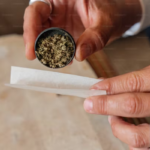
Table of Contents
- Understanding Cannabis Prerolls
- Selecting the Right Cannabis
- Grinding and Preparing the Flower
- Choosing the Rolling Paper and Filter
- Filling the Preroll Cone
- Packing the Preroll for Consistency
- Sealing and Twisting the End
- Quality Control and Testing
- Packaging and Branding
- Conclusion
Cannabis prerolls have become one of the most popular and convenient ways to consume cannabis. For seasoned users and beginners alike, prerolls offer a ready-to-smoke solution that eliminates the need for grinding, rolling, and sealing the joint yourself. They provide a hassle-free experience, making them a go-to option for dispensaries and consumers.
In the last ten years there’s been a big shift in the legal cannabis market. Companies are now in a race to create top-notch prerolls using the best buds selected strains and skills in rolling. Ever thought about the process behind these carefully made joints?
At the core of each preroll lies a meticulous method that guarantees uniformity excellence and the best possible experience when smoked. No matter if it’s crafted by the skilled hands of artisans or churned out in large quantities by machinery the procedures followed to create prerolls are largely unchanged. In this article one embarks on an in-depth exploration of the journey cannabis prerolls undergo starting with the careful selection of the appropriate strain and culminating in the final step of packaging.
1. Understanding Cannabis Prerolls
At its core a preroll is nothing more than a cannabis joint that’s been rolled in advance ready for use. The process involves packing rolling paper with finely ground cannabis and often integrating a filter tip often referred to as a crutch on one end; this addition aids in providing a stable structure and ensures a smoother puff.
Depending on what the brand prefers and what the market wants prerolls can be bought one at a time or by the bunch. While certain firms dedicate their efforts to crafting prerolls from a single strain to guarantee uniformity in flavor and effects across their products, others mix various strains together aiming to deliver a distinctive combination of tastes and impacts.
Having prerolls at hand offers a major benefit by negating the requirement for individuals to manually prepare their joints. While the act of creating a joint from scratch appeals to certain individuals as a pleasurable ritual, there exists a segment for whom this task presents obstacles, drains time, or simply proves to be a hassle, more so during instances of travel. Prerolls step in to fix this issue by being a trustworthy choice that’s made with professional care.
Moreover prerolls serve a wide audience ranging from medical marijuana patients seeking exact doses to recreational users in search of a simple and pleasant method for using cannabis.
2. Selecting the Right Cannabis
The foundation of a great preroll is the cannabis used to make it. Not all prerolls are created equal, and the quality of the flower plays a crucial role in the final product.
Producers take several factors into consideration when selecting cannabis for prerolls:
- Strain Selection: Different strains offer different effects, flavors, and aromas. Indicas tend to be more relaxing, sativas are more energizing, and hybrids provide a mix of both. The choice of strain determines the overall experience of the preroll.
- THC and CBD Content: Some users prefer high-THC prerolls for a strong psychoactive effect, while others look for balanced THC-CBD ratios for a milder, more therapeutic experience.
- Terpene Profile: Terpenes are the aromatic compounds responsible for the flavor and scent of cannabis. They also contribute to the effects of a strain, enhancing the overall experience.
- Moisture Content: If the cannabis is too dry, the preroll will burn too quickly and harshly. If it’s too moist, it may not burn evenly or stay lit. Properly cured cannabis ensures a smooth and enjoyable smoking session.
While some lower-end prerolls are made with shake or trim (small pieces of cannabis that fall off during processing), premium brands use full flower to guarantee a higher-quality product.
3. Grinding and Preparing the Flower

After picking the correct type of cannabis one must get it ready for rolling. They make the flower into a very fine powder to make sure it burns evenly and the air can move through it smoothly.
At first glance this step might look simple but there’s more to it: how fine or coarse the cannabis is ground can really change how it smokes. Should the cannabis be ground too finely the preroll could end up burning slower than expected or it might even be hard to smoke at all. Should the texture be overly rough the joint might not burn evenly which can result in a less enjoyable experience.
In the world of vast cannabis operations, big players rely on hefty industrial grinders. These machines help them handle massive amounts of cannabis at once, all while making sure every batch is just as good as the last. After the cannabis has been finely ground, the next step involves a careful sifting process. This is where any stems or bits of plant that aren’t wanted get taken out. They do this to make sure nothing messes with how good the preroll turns out.
The goal is to achieve a fluffy, uniform grind that burns evenly from start to finish.
4. Choosing the Rolling Paper and Filter

The choice of rolling paper is another critical factor in making high-quality prerolls. There are several types of rolling papers available, each offering different benefits:
- Hemp Paper: Made from natural hemp fibers, these papers burn slowly and evenly while complementing the cannabis flavor.
- Rice Paper: Thinner and lighter than hemp paper, rice paper has minimal taste and provides a smooth smoking experience.
- Unbleached Paper: Free from chemicals and additives, unbleached papers offer a more natural smoking experience.
Filters (or crutches) are optional but are often included in prerolls. They serve several purposes, such as preventing loose cannabis from being inhaled, maintaining structural integrity, and improving airflow for a smoother draw.
5. Filling the Preroll Cone
After grinding the cannabis and picking out the paper the next step is to start rolling it up. In big factories where they make a lot of these automated machines take over the job of stuffing preroll cones with the ground-up cannabis making sure each one has the same amount and is packed the same way.
Even with modern advancements, there are high-end brands that choose to fill their prerolls by hand. This choice embraces a craft-based method adding a unique personal touch. The objective remains the same no matter how it’s done. It’s about making sure the weed spreads out evenly inside the joint. This is crucial to avoid it burning in patches.
6. Packing the Preroll for Consistency
Once it’s filled up the preroll must undergo packing to keep its form and ensure it burns evenly. Should the packing be overly firm it becomes a challenge to draw smoke from it. Should it be overly loose there’s a risk it might burn too fast or not in an even manner.
To ensure an even distribution of cannabis within the preroll some producers turn to the use of shaking platforms or tools for compacting. In contrast there are those who depend on carefully honed hand skills to attain the ideal compactness.
7. Sealing and Twisting the End
After the cannabis has been neatly packed in, the preroll’s open tip is twisted tightly, making sure all contents remain intact. Securing the cannabis within the joint through this straightforward but crucial action guarantees its safety until the moment it’s time to light it up.
In an effort to boost their visual appeal and brand recognition some firms are now including stickers that carry their brand or tips with unique designs on their prerolls.

8. Quality Control and Testing
Before prerolls hit the shelves, they go through rigorous quality control testing. This process includes:
- Weight Checks: Ensures each preroll contains the correct amount of cannabis.
- Burn Tests: Determines how evenly the preroll burns.
- Potency Testing: Confirms THC and CBD levels.
- Microbial Testing: Screens for mold, bacteria, and contaminants.
Only prerolls that meet all quality standards proceed to packaging.

9. Packaging and Branding
The final step is packaging, which is crucial for maintaining freshness, compliance, and brand recognition. Prerolls are often packaged in:
- Glass Tubes: Preserve freshness and prevent crushing.
- Plastic Pop-Top Containers: Cost-effective and child-resistant.
- Multi-Pack Boxes: Designed for variety packs or premium collections.
Each package is labeled with important information, including strain name, THC/CBD content, lab test results, and health warnings.
10. Conclusion
The process of making cannabis prerolls is far more intricate than it may seem. Every step, from selecting the right flower to grinding, rolling, and packaging, contributes to the quality of the final product.
For consumers, understanding how prerolls are made can help them make more informed purchasing decisions and appreciate the craftsmanship involved in creating a high-quality joint. Whether you prefer a quick smoke on the go or a carefully curated strain experience, prerolls offer a convenient and enjoyable way to consume cannabis.
FAQs
1. What is the difference between a preroll and a hand-rolled joint?
A preroll is pre-made using machines or professionals, ensuring consistency. A hand-rolled joint is made manually by the user, allowing for customization.
2. Are prerolls made with high-quality cannabis?
It depends on the brand. Premium prerolls use whole flower, while lower-end products may contain shake or trim.
3. Can prerolls go bad?
Yes, improper storage can cause prerolls to dry out, lose potency, or develop mold. Store them in airtight containers away from heat and moisture.
4. Why do some prerolls burn unevenly?
Uneven burning (canoeing) can be caused by poor packing, humidity levels, or uneven grind consistency.
5. Are prerolls more expensive than rolling your own?
Yes, prerolls cost more due to labor, packaging, and convenience. Rolling your own is cheaper but requires skill and materials.




